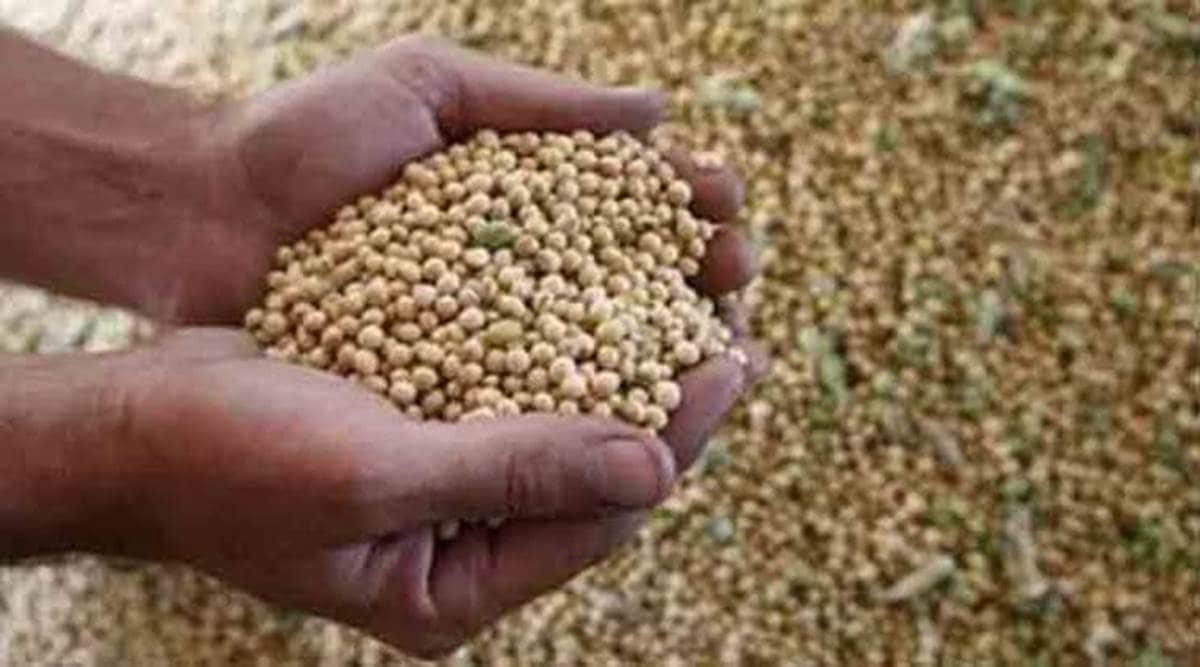 Traders in the market not only rule out softening of prices, some say prices can cross the Rs 4,000 per quintal mark as soon as November.
Traders in the market not only rule out softening of prices, some say prices can cross the Rs 4,000 per quintal mark as soon as November.After harvesting soyabean crop on 20 acres of his 30-acre holding, Dhananjay Bhosale is clear that he is not in a hurry to sell 160 tonnes of the oilseed he has produced. The farmer from Bombli Khurd in Latur district’s Deoni taluka feels it will be prudent to sell only after the average traded price of the oilseed breaches the Rs 4,000 per-quintal mark.
“Given the way the season is starting, I don’t think I will have to wait for long. Traders say the average traded price in Latur’s mandi will cross Rs 4,000 per quintal towards the end of Diwali… I will offload my stock then,” said Bhosale, who grows other pulses such as urad and moong over the remaining 10 acres of his holding.
Even before farmers start bringing their produce to wholesale markets, soyabean prices have seen a steady bull run. At Latur’s wholesale mandi, the average traded price of the oilseed is Rs 3,870, as against the government-declared minimum support price (MSP) of Rs 3,880.
Traders in the market not only rule out softening of prices, some say prices can cross the Rs 4,000 per quintal mark as soon as November.
“It all depends on arrivals. Given the upward trend, farmers have decided to hold on to their stock in hope of higher prices… the supply-demand mismatch will push up prices further in the near future,” said a trader at Latur’s wholesale market.
While for farmers like Bhosale, the current phase of high prices prompts them to hold on to their stock of oil extractors and processors, some say this indicates unhealthy speculation in the markets.
On Monday, the Soyabean Processors Association of India (SOPA) — the umbrella body of soyabean processors in India – had written to the Securities and Exchange Board of India (SEBI), asking for a ban on future contracts of the oilseed on the National Commodities and Derivatives Exchange of India (NCDEX) platform. The unhealthy speculation, SOPA claimed, had harmed actual trade.
Internationally, soyabean prices have seen a rally after two years. Soyabean prices at Chicago’s Exchange (CBOT) have crossed the barrier of $10/bushel mid-September. This is the first time near-term future prices have crossed the $10/bushel mark since July 2018. Increased buying by China and forecasts of a weak South American crop has fueled this bull run in the oilseeds markets internationally.
China is the world’s largest importer of soyabean in the world, with its annual import well over 950 lakh tonnes (lt), majority of which is sourced from South America and the United States of America.
Domestically, prices of soya meal- the protein-rich solid left after oil is extracted from the beans — is at an all-time high of Rs 31,000 per tonne, signaling increased demand from poultry and other feed makers.
Ashok Bhutada, proprietor of Latur-headquartered Kirti Group, which runs multiple extraction and solvent plants in Maharashtra, said an increased uptake of soyameal from the animal feed industry is responsible for the present price rise, both in meal and the oilseed.
“At the start of the Covid-19 pandemic, consumption of chicken and eggs had dropped, thanks to rumours which had linked the disease with consumption of poultry meat. But now the situation has changed, with people increasing their protein consumption to fight the disease,” he said.
Bhutada’s own group supplies feed to the fishery units and he said they have seen a four-fold rise since the last few months.
Most traders felt the present price trend will continue for some time, with farmers ready to hold on to their produce in hope of better prices.
📣 The Indian Express is now on Telegram. Click here to join our channel (@indianexpress) and stay updated with the latest headlines
For all the latest India News, download Indian Express App.